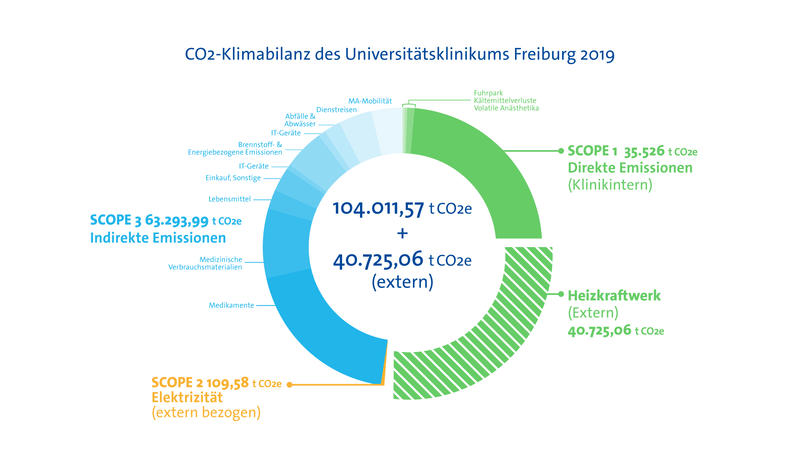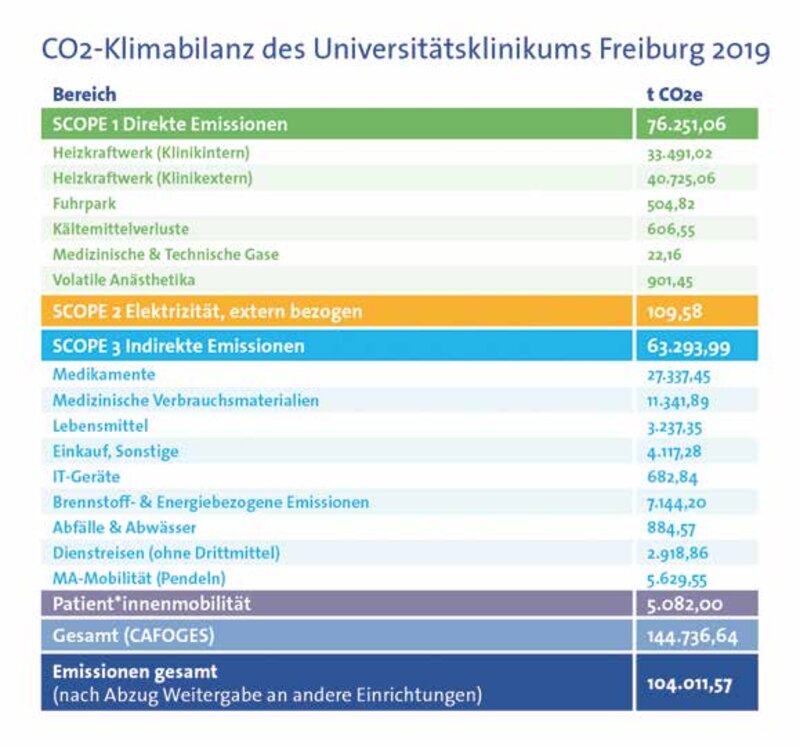CO2 calculator
Combating climate change with precision
The newly developedCO2 calculator from the University Medical Center Freiburg helps hospitals to calculate theirCO2 balance and take targeted measures to reduce it.
As particularly energy-intensive facilities, hospitals have a great responsibility to consistently improve theirCO2 balance. But what are the most important factors and where are new, more climate-friendly solutions most urgently needed? Until now, the emissions of hospitals could only be recorded inadequately. This is why the University Medical Center Freiburg, together with the Öko-Institut e.V. and funded by the German Federal Environmental Foundation (DBU), has developed aCO2 calculator.
With the open access tool published in May, hospitals can create theircarbon footprint in detail and in accordance with international standards. "Hospitals can only make concrete changes to theirCO2 emissions if they know the key parameters. With ourCO2 calculator, we create transparency and enable comparisons between hospitals," says Professor Dr. Frederik Wenz, Chief Medical Director of the University Medical Center Freiburg. "While our internal energy figures are very precise, very few pharmaceutical companies and other suppliers were able to provide us with information about the carbon footprint of their own products. There is still a long way to go to achieve a complete carbon footprint," adds Professor Dr. Andy Maun, Director of the Institute of General Medicine and CAFOGES project manager.
Compact carbon footprint
And what does the University Medical Center Freiburg'scarbon footprint look like? In 2019, the year in which the data for theCO2 calculator was collected, emissions from ongoing hospital operations amounted to 104,000 tons ofCO2 equivalents. With 1,616 beds, this corresponded toCO2 emissions of 64.36 tons ofCO2 per hospital bed. At around 53,000 tonsof CO2 equivalents, the largest share is generated in the production, transport and use of goods and services purchased by the University Hospital. The in-house production of heating, cooling and electricity used at the hospital generates around 33,000 tons ofCO2 equivalents. Around 5,000 tons of emissions are attributable to patient transport. In addition, the production of district heating for other state institutions such as the University of Freiburg in the hospital's combined heat and power plant generates around 41,000 tons of greenhouse gases.
University Medical Center Freiburg
Office of Governance, Quality and Sustainability
Breisacher Straße 153
79110 Freiburg
Phone: 0761 270-21851
nachhaltigkeit@uniklinik-freiburg.de



